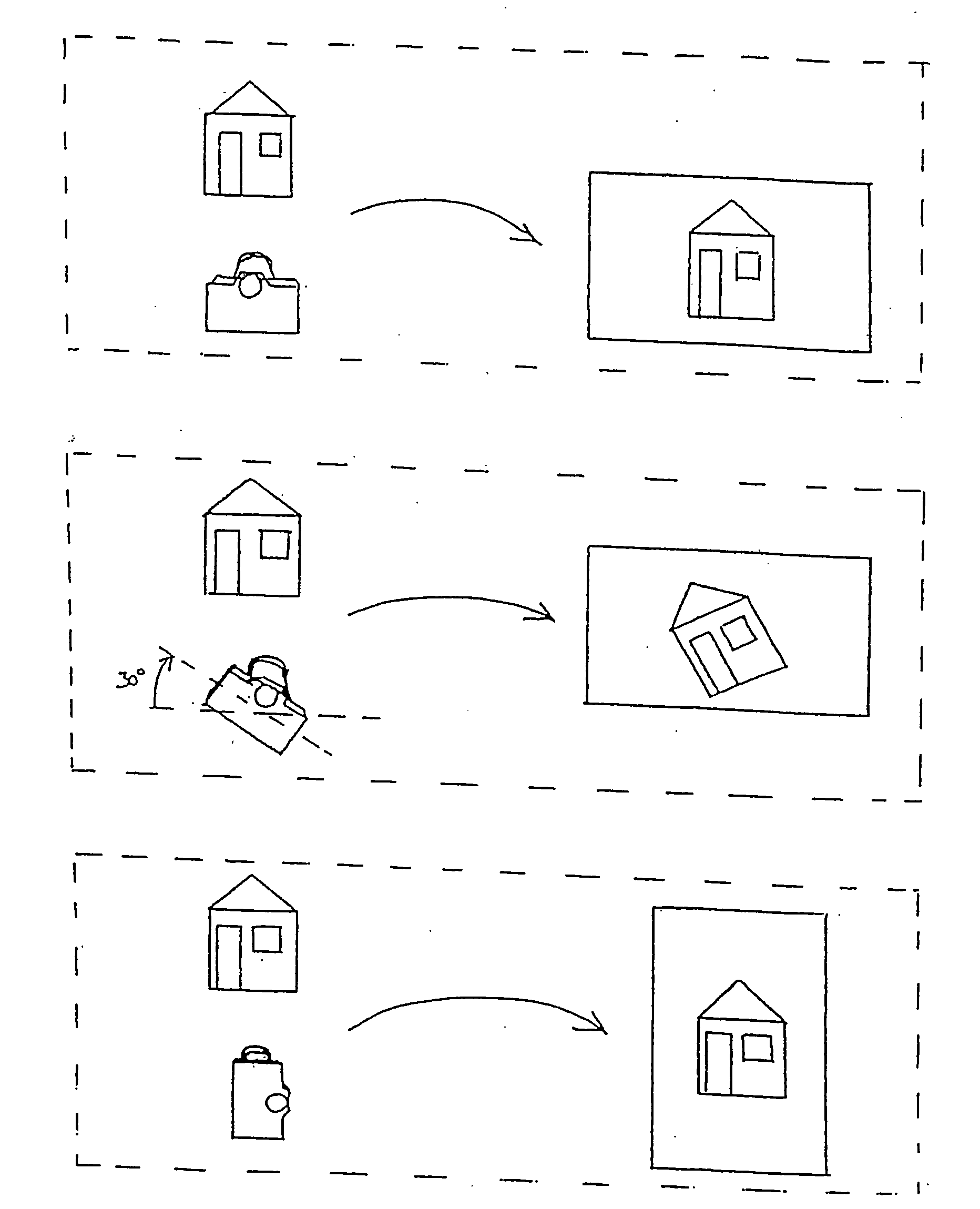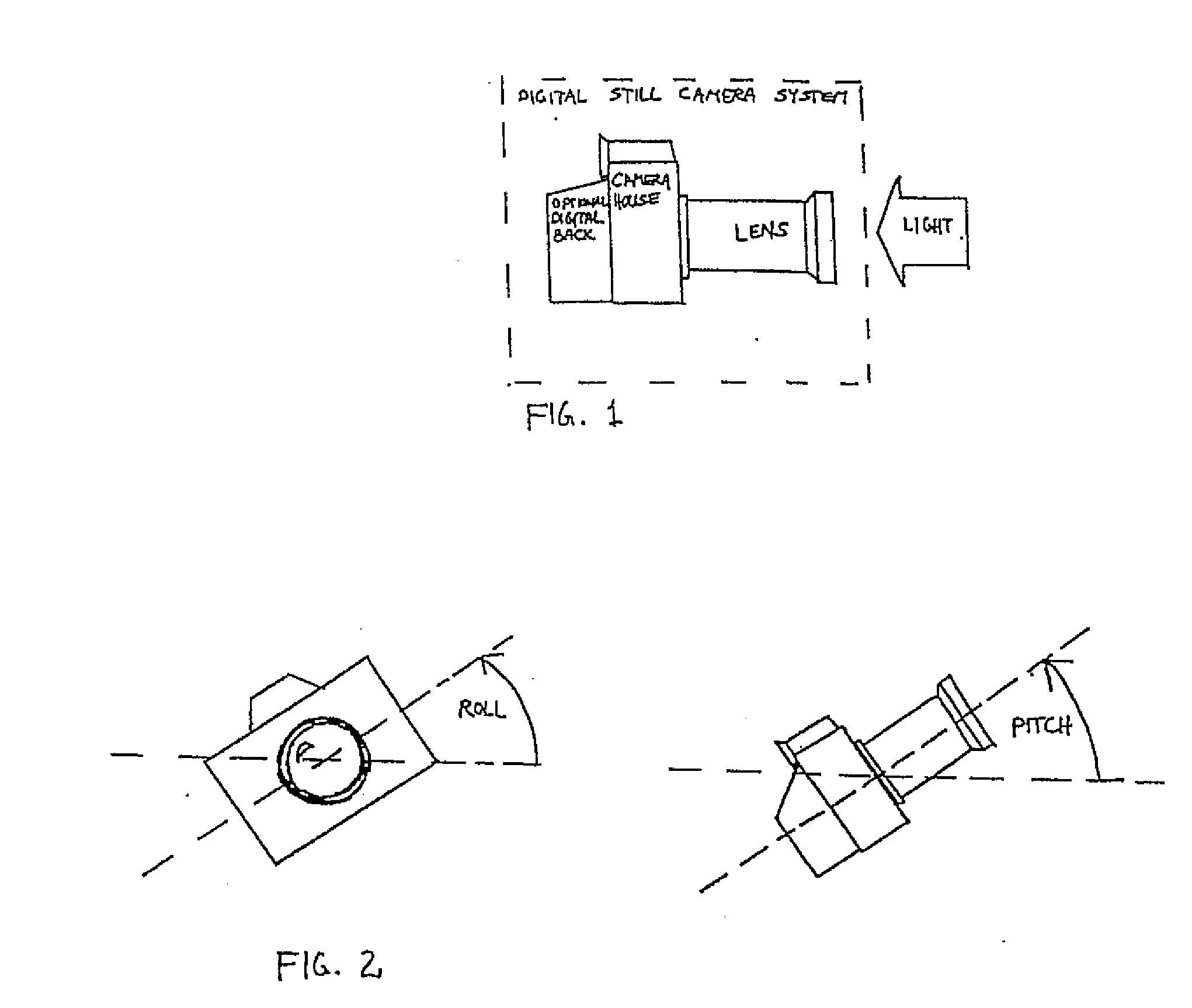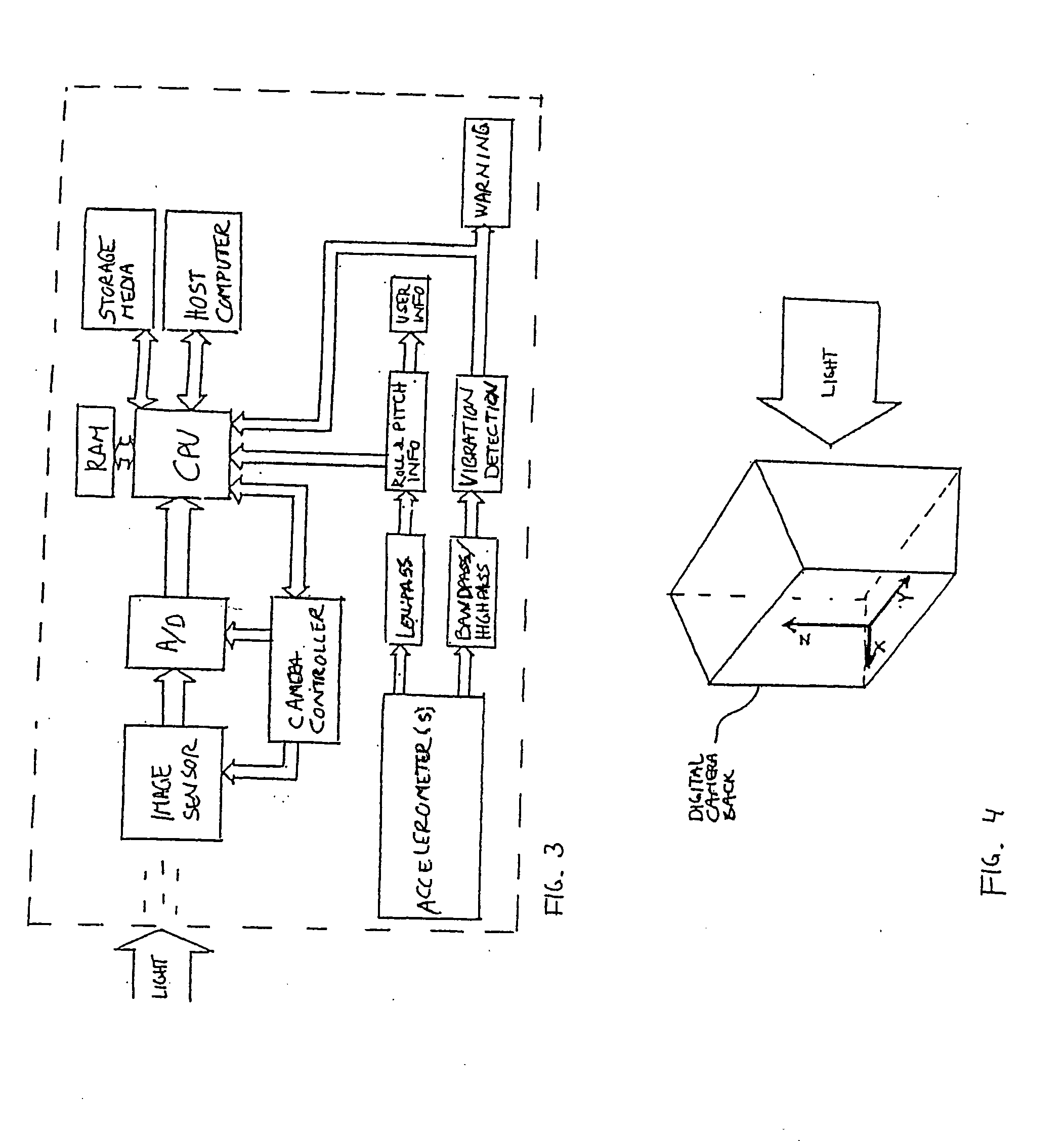Digital camera with integrated accelerometers
a digital camera and accelerometer technology, applied in the field of digital camera systems with integrated accelerometers, can solve the problems of difficult miniaturisation, mercury switches usually consume a lot of space, and can cause great damage, so as to reduce moiré image defects and increase sharpness.
- Summary
- Abstract
- Description
- Claims
- Application Information
AI Technical Summary
Benefits of technology
Problems solved by technology
Method used
Image
Examples
Embodiment Construction
[0088]In the following description, for purposes of explanation and not limitation, specific details are set forth in order to provide a thorough understanding of the present invention. However, it will be apparent to one skilled in the art that the present invention may be practiced in other embodiments that depart from these specific details. In other instances, detailed descriptions of well-known devices and methods are omitted so as not to obscure the description of the present invention with unnecessary details.
[0089]The digital still camera system as shown in FIG. 1, where the digital back is optional, incorporates a section which is able to determine the roll and pitch of the camera with respect to the field of gravity, see FIG. 2. The same section also monitors the vibrations, which occur during the time of exposure. A block diagram can be seen in FIG. 3. The sensor section is comprised of one or more accelerometers, which monitors acceleration in two or three axes placed pe...
PUM
 Login to View More
Login to View More Abstract
Description
Claims
Application Information
 Login to View More
Login to View More - R&D
- Intellectual Property
- Life Sciences
- Materials
- Tech Scout
- Unparalleled Data Quality
- Higher Quality Content
- 60% Fewer Hallucinations
Browse by: Latest US Patents, China's latest patents, Technical Efficacy Thesaurus, Application Domain, Technology Topic, Popular Technical Reports.
© 2025 PatSnap. All rights reserved.Legal|Privacy policy|Modern Slavery Act Transparency Statement|Sitemap|About US| Contact US: help@patsnap.com



